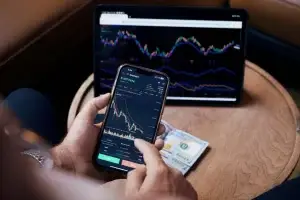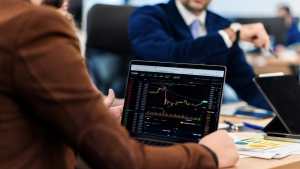Futures trading is not just a way to make money from market fluctuations, but a complete system where every step counts. For a beginner, this area can seem complicated and confusing, but with the right approach and an understanding of the basic principles, you can start trading futures like a true pro.
This guide will detail the strategies and techniques to use, as well as the risks and rewards associated with this type of investment.
Futures Trading Basics: How to Start Trading Futures
Futures are contracts that obligate parties to buy or sell an asset in the future at a predetermined price. This transaction offers the opportunity to profit from both the rise and fall of the asset. But before we get into the strategies and nuances, we need to understand how to start trading futures.
What do you need to get started?
 First, you need to open a trading account with a broker that offers access to these instruments. Once you have done this, you will need to deposit a certain amount of money into your account that will serve as collateral.
First, you need to open a trading account with a broker that offers access to these instruments. Once you have done this, you will need to deposit a certain amount of money into your account that will serve as collateral.
Here are some important steps for beginners:
- Choosing a broker is the first step in trading. Brokers offer platforms where futures transactions can be executed.
- Instrument selection: Futures are available for a variety of assets, from oil and gold to stocks and currencies. It is important to choose the right market that you like to work in.
- Margin requirements: Brokers often require a margin deposit. This is the collateral required to open a trade. This is a margin deposit that is used if your trade is not profitable.
Once you understand futures trading and have gained experience, you can move on to more complex strategies.
Futures trading strategies: how to choose the right style?
Without the right strategy, you can easily lose capital. It is important to consider the volatility of assets and their objectives.
Examples of popular techniques:
- Trend trading is a method of opening positions in the direction that the market is moving. The strategy is based on chart analysis and determining the long-term trend. Trading against the trend is the opposite of the above strategy. Traders open a position against the current trend because they expect the market to reverse soon.
- News Trading: One of the most powerful factors that influences the future is news. It doesn’t matter if it’s economic data or political events. Based on this news, trades can be opened to take advantage of short-term market fluctuations.
- Leverage trading is a method that allows you to increase your potential profits (or losses) by using borrowed money.
- Leverage in futures allows you to increase the size of a trade without having to use more of your own capital. However, this requires caution.
Futures Trading Risks: How to Minimize Potential Losses
Despite all the chances of winning, the procedure involves significant risks. Dangers can arise from changes in asset prices, wrong strategic decisions, and the use of margin:
- Liquidity Risks: In some markets, futures liquidity can be low, making it difficult to enter or exit positions at the optimal price.
- Use of Margin: Using borrowed funds increases both profit potential and risk. If the market moves against you, you can lose more than you originally invested.
- Variation margin is a mandatory payment that a trader must make to maintain his position. If the market fluctuates over a large range, this margin can increase significantly.
To minimize risk, we recommend using tools such as stop loss and take profit. These help automate the process of exiting a trade at predetermined levels.
Leverage and Margin in Futures: How to Use Them Effectively
Leverage is one of the most effective tools to increase profits in futures trading, but it should be used with caution. By using borrowed money, traders can make trades for amounts larger than their actual deposit.
What is leverage and margin?
- Margin is the deposit that a trader must make as collateral to open a position. The size of the margin depends on the volume of transactions and the broker’s terms and conditions.
- Leverage is a ratio that indicates how many times a trader can increase his position. For example, with a leverage of 1:10, you can place a trade that is ten times larger than the amount in your account.
Stop-loss and take-profit for futures: how to use these tools correctly
Two tools that help you manage risk and maintain your trading discipline. They form the basis of the strategy of many professional traders.
How do stop loss and take profit work?
- Stop loss is an order that automatically closes a position when the asset price reaches a certain loss level. This way, you can limit your losses if the market moves against you.
- Take Profit is an order to automatically close a trade when a certain profit is reached. With Take Profit, you can secure your profit without having to wait for a market reversal.
Conclusion
 Futures trading: how to develop a strategy requires careful planning and understanding of risks. It is important to remember that successful trading requires continuous learning, improving skills and good risk management. Every trader must answer these questions: Are you prepared for possible losses and how do you react in the event of market volatility?
Futures trading: how to develop a strategy requires careful planning and understanding of risks. It is important to remember that successful trading requires continuous learning, improving skills and good risk management. Every trader must answer these questions: Are you prepared for possible losses and how do you react in the event of market volatility?
Now that you know how to trade futures and what risks you are taking, you can start practicing. Start small by choosing the right risk management strategy and tools.
 en
en  ru
ru  de
de  ar
ar  es
es  nl
nl  hi
hi  fr
fr  it
it  pt
pt  el
el 



